We Interupt Our Regularly Scheduled Magazine For This Important Announcement.
RootsWorld cannot survive without the support of our readers. If you want to hear great music and read great writers, then we need each listener and reader to contribute just a little to make it happen. Please join us!
Make a One Time Contribution Today!
|
$5.00
|
$10.00
|
$20.00
|
|
$40.00
|
$70.00
|
$100.00
|
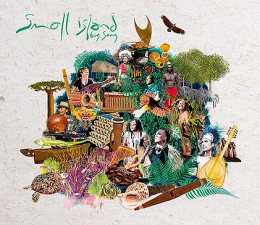
|
-
Once producers Tim Cole and Bao Bao Chen learned how potentially damaging climate change could be to the Pacific and Indian Ocean regions, they set about recording music from those areas so that the musical connections binding the whole could be spotlighted and raise awareness. It was in Australia, where such connections are known as songlines, that the idea came about. The interestingly packaged and impressively diverse 18 tracks of Small Island Big Song are the result of their labors, and the oceanic songlines they present will fill your ears with some of the most heartfelt and evocative sounds imaginable... Everything from water percussion to rapping is employed by musicians representing Australia, New Zealand, New Guinea, Taiwan, Borneo, Tahiti, Madagascar, Easter Island, Bali, Bougainville (Papua New Guinea), Hawaii, Vanuatu, Malaysia and the Solomon Islands...
Read Tom Orr's review, hear the music, and watch some videos showing how the process evolved.
|

|
-
Karine Polwart is a Scottish songwriter, musician, storyteller, poet and performer, among her very long list of credits and skills. She delves into ancient folk music, modern popular song and pretty much everything in between. Her new album is both theater and song, a thematic look at refugees, immigrants, emigrants and other people on the move in the world, from both historical and modern perspectives. Laws of Motion is a powerful piece of work: sympathetic, loving and angry, artistic, political and raw in equal measure. We'll have a full review of the new album soon, but "Laws of Motion" struck such a chord with my radio listeners that I felt I wanted to share it in the moment we most need it. Co-written with Martin Green, its musical setting is a tense bed of electronics and acoustic instruments, with multiple, layered voices singing of the grace and strength of displaced people. Listen!
|
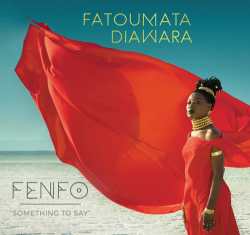
|
-
On Fenfo, her third album, Fatoumata Diawara starts with just her sweet, fine-grained voice and drums, laying down a groove as if to tip her hat to the wellspring of traditional music she draws from. Then the song picks up an electric guitar and bass, segueing into a marriage of past and present, setting the stage for the rest of this fine album. Like fellow Malian singer-songwriter Rokia Traore, Diawara plays a personal distillation of her multi-cultural life. Her soulful voice has a hint of rasp in its silky flow, and the instrumentation liberally uses modern and global elements, though she sings in Bambara rather than English or French.
Read Marty Lipp's full review and listen to some of her music (two with great videos).
|


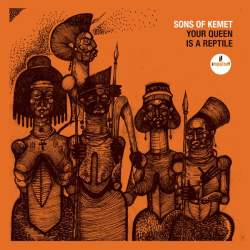
|
-
The categorical declaration that "jazz is America's classical music" expresses a curatorial certitude and sense of exclusiveness that denies the authenticity of improvised music produced or rooted anywhere else on the planet. Paradoxically, this frees overseas devotees of the canonic straitjacket that fetishizes pedigree and technique, and an obligatory nod to New Orleans and formulaic invocations of an over-determined musical past... Three recent recordings suggest that, as jazz evolves in a global milieu, the music's rooted certainties are giving way to approaches that take the North American formulary in very different directions.
Arturo O'Farrill and the Afro Latin Jazz Orchestra: Fandango at the Wall
Jowee Omicil: Love Matters!
Sons of Kemet: Your Queen Is a Reptile
What unites these recordings is not so much their ease with jazz as defined by the North American canon, but their independence from its received norms, and a readiness to experiment and draw from myriad sources, reflecting the cosmopolitan character and globe-ranging experience of the artists themselves. These titles convey a pervasive sense of cultural and political intentionality, an inclusive conception of world musics, a contrarian sense of world history, and a conviction that music can bring people together in inspiring and powerfully enlightening ways.
Micheal Stone takes you across the borders.
|
-
So much great music passes through our door every year, and in the magazine and on the radio, I try to sort it out as best as I can, with the help of a very dedicated group of volunteer writers. So this year, with the input of some of those writers, I am presenting a series of radio shows picking out some of our favorite songs from the last year. They are not ranked, simply presented in a mostly uninterrupted hour of music. I hope you enjoy them as much as we do. - CF
Listen and read more about each artist.
|
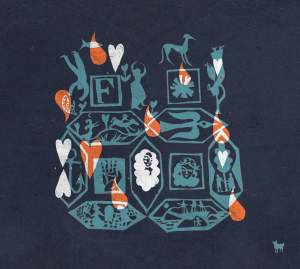
|
-
The Furrow Collective is an English/Scottish quartet. Their recording Fathoms might very well be one of the best folk recordings from the Brisish Isles in 2018. I emphasize folk, because this quartet focuses on tradtional story telling, from classic to lesser known, performed with a lot of spirit. The arrangements are personal and direct, with few contemporary embellishments. I chose to feature the song "Davy Lowston" because it strikes such a deep chord of humanity and despair, in a tale about whale hunters stranded in New Zealand by their captain.
Listen!
|

|
-
Paris Combo is a group that is tough to pigeonhole, but that hasn't stopped folks from trying to do so for the last 20 years. Often described as a Gypsy swing band in the style of Django Reinhardt, the group has always kept a recognizable core sound but pushed out into other territory. This year, they defied expectations again with Paris Combo Remixed, composed solely of remixes as they gear up for a North American tour. As founding member David Lewis told Marty Lipp, "It just sort of snowballed." Vocalist Belle du Berry added, "It's a little bit of French culture meeting a little bit of American culture
.For us it's always interesting to meet new people in the audience... the way they feel the music, the language it's always very interesting and precious."
Read Marty Lipp's full interview and listen to some of the music.
|
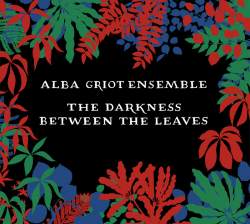
|
-
Alba Griot Ensemble is an intriguing collective that connects musicians from Scotland, Belgium and Mali to create a blend of Celtic folk music with rock, blues and jazz undertones, woven together with a strong Manding influence. Scots Mark Mulholland and Craig Ward feature on guitar, while Belgian Hannes d'Hoine provides the foundation on double bass and Malian Yacouba Sissoko adds ngoni, calabash, yabara and karanya to the mix. All four members sing and add their harmonies to the project with fine guest appearances from Tony Allen, Toumani Diabaté, Madou Sidiki Diabaté, Pamela Badjogo, Lassana Diabaté, Jean-Philippe Dary, and Ruth O'Mahony Brady... On The Darkness Between the Leaves the quartet works seamlessly, spinning their acoustic instrumentation into a natural, harmonious style that is full of depth. None of the separate elements sound out of place and the performances draw from the strength and support of the ensemble.
Hear samples of many of the tracks and read Alex Brown's full review.
|
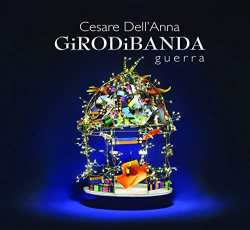
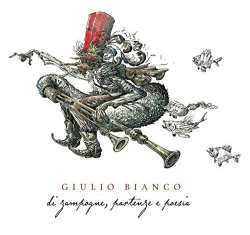
|
-
Two new albums by prominent figures on the Salento music scene display the sonic diversity of that small but culturally fecund territory of Italy's Puglia region. Guerra, by trumpeter, composer, and bandleader Cesare Dell'Anna and GirodiBanda, is an expansive offering; its eighteen tracks, in various styles and multiple languages, total more than an hour's worth of music.
Di zampogne, partenze e poesia, by Giulio Bianco, the utility player of Salento's best-known group, Canzoniere Grecanico Salentino (CGS), is a more modest affair, comprising six tracks and clocking in at twenty-six minutes. Dell'Anna's record ranges widely, with Salentine idioms in the mix but also Neapolitan and other Southern Italian traditional music, Balkan, jazz, reggae, and European classical elements. Bianco's album keeps a tight focus on pizzica and tarantella. Both are first-rate offerings that will delight southern Italian music fans, whether seasoned cognoscenti or newcomers who caught the pizzica bug.
Read George De Stefano's full review, listen to the music and see some videos from both artists
|

|
-
Suistamon Sähkö started as part of a multi-performance series of works for music, dance and visual arts called Suistamo - The Laboratory of Tradition by Finnish composer and accordionist Anne-Mari Kivimäki. In a number of journeys to the Russian-Finnish border region of Karelia, she explored both the traditions and modern realities of this multi-national territory. Etkot, ресторан ja etnoteknoa marks the band's first fully independent recording, free from the laboratory and open to anything. It's a project rich in contradictions and full of energy (the band's name translates as Suistamo Electricity)... There are two full songs with commentary. Tuomas Juntunen talks about the beauty and dilapidation of Jyskyjärvi. Eero Grundström explains how a project with 800 folk dancers evolved into rap song about the Finnish civil war and the dangers of hate speech.
Please meet Suistamon Sähkö
|
Music of the Month

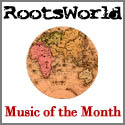
|
-
"To talk about it, to sing it, to make music, is to learn to think."
Today I have the privilege to introduce you to the stunning and challenging music of Ann O'aro from the island nation of Réunion. O'aro is a poet, dancer, singer and composer who dedicates this album to the lost and abused of her island, the victims of violence and sexual assault, incest and rape, not in the tone of hopelessness and despair, but in a defiant survival and healing. As Bruce Miller writes in his RootsWorld review, "Musically, Ann O'aro is breathtaking. Her voice is as sinewy as it is soothing, as if she needed to calm all of us so that we'd be OK. But she's also clearly insistent... if she's not showing her anger in more typical fashion- smashing things, getting into fights- she's letting it out without compromise in music that turns torture into art." Read Bruce's full review and listen to the music.
This is our pick for Music of the Month for November. Get a copy of the CD and support RootsWorld.
|

|
-
Kyab Yul-Sa means 'the land of exile.' Certainly for Tibetans and for many others in this world exile is the reality. Kyab Yul-Sa's independent debut production is the work of a talented trio - Tibetan exile Lobsang Chonzor (vocals, dranyen lute, gyumang dulcimer) and Europeans Margeaux Liénard (violin and buzouki) and Julien Lahaye (percussion) - who work the Tibetan sounds into a stirring melange on Résonance d'Exil(s). Chonzor's powerful and evocative voice joined by the diverse experience of two very skilled musicians makes the recipe for a gentle, but not anodyne, recording bringing together traditions and sounds from across Europe and Asia.
Read David Cox complete review and listen to some of the music online.
|

|
-
The latest release from Minyeshu Kifle Tedla showcases her broad, inventive blend of contemporary music rooted in the traditions of Ethiopia. This compelling set of songs explores Minyeshu's past while looking forward with a dynamic ensemble that is steadfast and expansive. The blend of traditional and western instruments give Minyeshu a range of musical options to support her rich vocals and personal lyrics. The title of the album, Daa Dee, refers to the sound of encouragement an Ethiopian mother gives her baby as they learn to take their first steps. Minyeshu draws inspiration from this idea of a newfound independence...
Read Alex Brown's review.
|

|
-
In an uneasy era of peace in Central America, where memories of Maya genocide remain strong, a new generation of artists has emerged, often with a pointed consciousness of historical subjugation, and identification with other oppressed peoples across the globe. Born in Quetzaltenango, Doctor Nativo (Juan Martínez) worked in his father's restaurant from a young age, imbibing the reggae, cumbia, salsa and bolero that blasted from its speakers. His father Arturo, a native of Cuba, welcomed the Guatemalan guerrillas who would slip into town from time to time; hence, in 1990 the regime assassinated his father, along with five of his friends. Doctor Nativo left to travel in Europe, India and Latin America, Cuba and Barcelona before returning in 2010 to Guatemala. On a spiritual quest, he took part in a Maya ceremony under the tutelage of an indigenous elder, encountered his animal spirit or nahual, and began seeking to incorporate Maya culture and cosmology into his music. Guatemaya is a play on the country's name a pointed assertion of the indigenous presence that long preceded the Spanish conquest.
Read Michael Stone's article, listen to some songs from the recording, and see a recent performance video.
Guatemaya is our October 2018 pick for Music of the Month. These recordings were donated by the artist and Stone Tree Records.
Read more, listen and subscribe or buy the CD.
|

|
-
A hurricane came through Somerville, MA this month, in the the larger than life person and persona that is Sona Jobarteh. She is one of the very few female kora players in her native Gambia, and comes from a line of West African griots, including her grandfather Amadu Bansang Jobarteh and her cousin Touomani Diabate. With her was a five piece ensemble, The Sona Jobarteh Band, that at one point included her young son. The entire show was a dynamic blur, with interesting jazz-like cross currents and a happy, beaming band. It all flowed seamlessly, making it impossible for the audience to stay seated as the band played.
David Smith was there to tell you about it.
|
Music of the Month
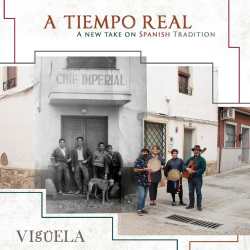
|
-
Vigüela's A Tiempo Real (ARC Music) is a double CD recording which looks at traditions from the oft-forgotten heartland of Spain, Castilla La Mancha, located primarily to the south and east of Madrid but also southwest of the capital... La Mancha is a more typically "Spanish" area and part of the Castillian heartland, albeit with stronger Arabic traditions than many parts of Spain... Vigüela is a six-piece band with a multitude of singers who also play a variety of traditional instruments. Accordingly rural preoccupations and village life make up the subject matter in many of the songs performed. Read David Cox' full review, watch a live performance and listen to some of the music from the CD.
|
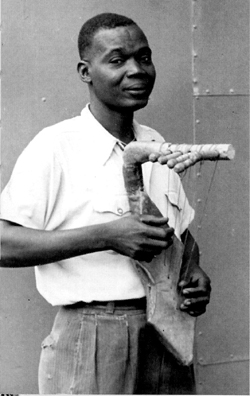
|
-
Intersections of cultures rural and urban, national and foreign, ancient and modern are found in many parts of the world but are especially fascinating in Africa. A continent of great cultural diversity to begin with, where some 2,000 languages are still spoken today, Africa has also received visitors from other continents over the ages, though seldom by invitation. Invaders, slave-raiders, plunderers, missionaries and colonialists have meted out far more harm than benefit to Africans, and yet the history of African interaction with the rest of the world has not been entirely dismal. Enslaved Africans brought their music to the Americas, where it took root and flourished, developing into the hybrid styles that in modern times became popular not only throughout this hemisphere but around the world as well most profoundly at their source, where contemporary Africans recognized their ancestral sounds and rhythms and were inspired to reclaim and remake them anew.
Such cultural intersections are explored in Listen All Around: The Golden Age of Central and East African Music, the latest of Dust-to-Digital's estimable presentations of historical recordings. Two CDs encased in a hardcover book, this album resurrects field recordings made in Africa by Hugh Tracey, an Englishman who emigrated in the 1920s to the British colony known at that time as Southern Rhodesia. Tracey was a farmer with no academic credentials in anthropology or musicology, but he was enthralled by the songs his Shona field hands sang and by the instruments they played, and when tape recorders became practical in the late 1940s, he started recording their music. Soon he was hauling his recorder around Rhodesia and then leading expeditions as far as the Belgian Congo and Uganda. The more music he heard, the more he wanted to hear, and over a span of thirty years he made thousands of recordings in twelve African countries.
Read all of Ken Braun's commentary and review in his article in RootsWorld.
|
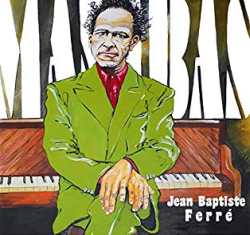
|
-
Born in Paris with family roots in Guadeloupe, pianist-composer Jean-Baptiste Ferré cites Bill Evans, Herbie Hancock, Keith Jarrett and Brad Mehldau as major influences, although his playing is unlike any of his idols. Ferré entered the conservatory at age six and also drew on the musical mélange of the eclectic Paris bar and club scene... Mambas is the pianist's solo debut. The repertoire and additional instrumentation (oud, kanun, double bass, percussion) owe as much to the traditions of Andalusia and the Maghreb as they do jazz improvisation.
Read Michael Stone's full review and hear a few songs from the album.
|
Music of the Month

|
-
Jean-François Bélanger is a composer and multi-instrumentalist whose work is greatly influenced by his other career, as a psychiatrist. He is a meticulous and thoughtful artist whose work is imbued with a variety of moods and feelings. In the last few years he has recorded and released a pair of truly interesting recordings that explore Nordic roots with a keen ear. He says his album Les vents orfèvre, "tries to comprehend the things of the mind. Intuition, meditation, hope were my tools of exploration." The second part of this Nordic diptych is Les entrailles de la montagne, which takes bigger leaps into the modern world without ever losing its origin story. Bélanger says that it "tries to evoke the forces of nature and celebrate the strength of the material. I hope I managed to mobilize this brute force graciously." Read Cliff Furnald's review of the albums and listen to a few full tracks and extracts.
|
|
|
-
"I didn't have anything to prove anymore, and wasn't looking for anything I didn't already have. As a result, there's a freedom in the record that mirrors what I felt throughout this experience. And luckily, Lee [Townsend, his producer] was with me on all of this. As soon as we got into the studio, everything felt so right. At some point I just had to look around and tell myself that I didn't regret anything." - Rinde Eckert
Rinde Eckert's The Natural World was the result of a two-month period during which, under the auspices of a Doris Duke Performing Artist Award, he gave free performances around the country, spanning the gamut from living rooms to festival stages. On the album, he plays all the instruments, including guitars, piano, accordion, South American wood flute, and percussion, and provides all the voices. As Tyran Grillo writes in his interview and review, "His voice is indeed the alpha and omega of The Natural World. Whether rowing Indian classical waters or gilding the edges of a fantastical Americana, his throat is an entity unto itself. The arrangements themselves are artful and adaptive to the needs of every lyric."
See what both Tyran amd Rinde Eckert have to say about the album, and listen to some of the songs.
The Natural World is our September 2018 pick for Music of the Month.
Support RootsWorld and subscribe now or make a one time donation and receive the CD.
|

|
-
The positive power of music is expressed in full on the debut, self-titled release by Nsimbi. The group features GNL Zamba from Uganda and Miriam Tamar from the USA, a married duo who met in Uganda years ago where they first collaborated on a track together to raise HIV awareness. In Uganda, Zamba is better known as a hip hop MC, dubbed the "ghetto storyteller." He brings those skills to this record where his voice is balanced by Tamar's clear, uplifting vocals. The pair are joined by US-based Ugandan multi-instrumentalist Herbert Kinobe and the Congolese guitarist and singer Jaja Bashengezi to form a solid ensemble. Nsimbi's sound is filled with traditional East African instrumentation, but takes a modern approach. Their songs are based on Swahili and Baganda proverbs, which work well with Zamba's fluid storytelling style. Lyrics are sung by Zamba and Tamar in English, Luganda, Lingala, and Swahili. The proverbs serve as a source of inspiration and knowledge, two aspects of music that Nsimbi try to promote with an eye on appreciating and understanding different cultures...
Read Alex Brown's review and listen to some of the music.
|
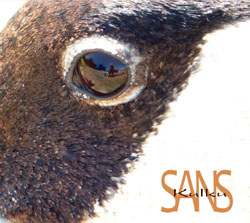
|
-
SANS is an impeccable combination of musicians and influences, formed in the wake of Andrew Cronshaw's 2011 album The Unbroken Surface of Snow. For that outing, Cronshaw, long known as a multi-instrumentalist and master of the electric zither, was joined by reed player Ian Blake, Armenian duduk maestro Tigran Aleksanyan, and the superb Finnish singer Sanna Kurki-Suonio . The chemistry evident on The Unbroken Surface of Snow coalesced into the group SANS. Convening in a Suffolk barn to record Kulku during the winter of 2017-18, Kurki-Suonio's daughter Erika Hammarberg joined the band. Scottish musician Jim Sutherland served as producer... SANS achieve a rare thing: a fusion of musical cultures that makes you believe you are hearing one thing when in fact you are hearing something different and new.
Read Lee Blackstone's review and listen to some tracks from the album.
|
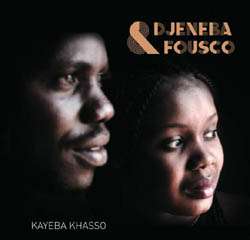
|
-
Djénéba Kouyaté and Fousseyni 'Fousco' Sissoko both hail from the Kayes region of Mali. The married couple struck up a musical alliance after Djénéba became a sensation on the national TV talent contest 'Tounkagouna.' With her dynamic voice she carries on the long-standing tradition of her griot family. Fousco is a distinguished guitarist, vocalist and songwriter who first learned his craft from his father, a composer and arranger himself. Djénéba and Fousco proudly sing for their homeland and present an ensemble that respects traditional music while adding nice contemporary touches on their debut international release Kayeba Khasso.
Alex Brown takes an in-depth look at their new recording.
|

|
-
Pizzica has become synonymous with Salento, but the music of the southernmost part of Italy's Puglia region encompasses much more, as Massimo Donno demonstrates on Viva il Re! The latest release by the guitarist, composer, and vocalist celebrates banda music, that is, the marching bands he heard while growing up in Corigliano d'Otranto, a small town in the heart of Salento.
As Donno told Rootsworld, the album combines the "sounds of the south of Italy, of Salento in particular, and of the Mediterranean" with "the sounds of symphonic band, like fanfare." Symphonic bands have similar instrumentation to marching bands, with woodwinds, brass, percussion, and, in this case, guitar. But they generally perform concerts, and they have a broader repertoire. Viva il Re, with its varied styles and compositions, offers a greater sonic richness and variety than most marching bands as Donno explores the music with La Banda De Lu Mbroia and a number of other guest performers. George de Stefano digs into this rich and complex recording.
|
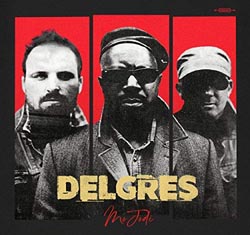
|
-
"It was like a journey," says Pascal Danaë of how Delgrès, his 3-man band of guitar, percussion, voices and tuba, reached fruition from a seed that was planted in the ancestral soil of the Caribbean island cluster of Guadeloupe and watered variously in Paris, West Africa, the Mississippi Delta, and more. As he tells it, Danaë was living between Amsterdam and Paris, where he was born, knocking around as a session musician, when, "I started playing a little bit of blues just because it was a hard time in my life, and I started strumming the guitar, the Dobro guitar, playing a little bit of slide, and I just closed my eyes. I let things come out, and I started singing in Creole. I grew up listening to my parents speak Creole all the time, and it was in my culture. It was part of my blood
" But, he had never sung in Creole before, nor considered his own culture integral to his music.
From that discovery he would form his own band, named after Louis Delgrès, a Guadelupean Creole colonel in Napoleon's army who martyred himself, in 1802, resisting France's attempt to retake the territory and reinstitute slavery less than ten years after it had won independence.
Read Carolina Amoruso's interview with the artists, and read her review of their new album Mo Jodi.
|
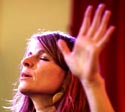
|
-
The midsummer night began with a lone voice. At first it seemed to be emerging from a distant wilderness behind us, and then did an aural sleight of hand to our right before the source of the voice stepped into view. Moira Smiley made her way to the microphone slowly, cooing and warbling in tones somewhere between a Baka lament and a cedar flute greeting a Sonoran sunrise. By the time she reached front and center, it was apparent that this performance to mark the release of her radiant new album Unzip the Horizon wouldn't be a typical hey-it's-great-to-be-here affair. Musically, Smiley has irons in so many fires that no category can hold her. I knew as much from the scope of album and felt more than an inkling that even further delights were to be had from experiencing her as live, direct and intimately as possible, in a home in Nichols Canyon, in the hills above Los Angeles.
See Tom Orr's story about this concert, and hear some songs from the performance
|


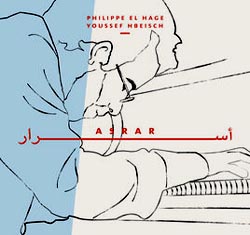
|
-
Joined by percussionist Youssef Hbeisch, singer Houry Dora Apartian-Friedli, flautist Ramy Maalouf and electric bassist Ognjen Beader, Paris-based Lebanese pianist-composer Philippe El Hage invokes a range of eastern and western influences on Asrar. Recorded in Lausanne and Dubai, its nine originals range from traditional regional leitmotifs to western classical and jazz. El Hage finds inspiration in the memories of his youth in Lebanon, and in regional history and modern politics.
Read Michael Stone's full review, listen to some pieces from the recording and watch a live performance
Audio feature: In the artist's own words
I asked Lebanese born pianist Philippe El Hage to share and talk about some of the songs he and Palestinian percussionist Youssef Hbeisch created on their collaboration, Asrar.
"When I recorded the Asrar project with Youssef, we met directly in the recording studio in Lausanne. I did not have any previous stage experience with Youssef, but the recording process was very natural... I find the combination of piano and Oriental percussion very interesting but also very challenging and intriguing. Youssef used a very rich setup of different percussions performed with a great sense of musical colors (Arabic and contemporary) and a great sense of dynamics."
Listen to the the songs he chose and read his comments on their history and meaning.
|
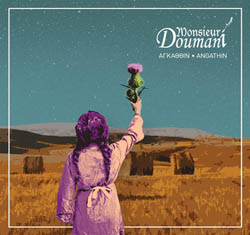
|
-
Angathin (translation: 'thorn') is Monsieur Doumani's third record. The Cypriot trio is comprised of Demetis Yiasemides (trombone, flute, and vocals), Angelos Ionas (guitar, vocals), and Antonis Antoniou (tzouras a bouzouki-like instrument; stomp box, and electronics), but Angathin finds the group inviting in a host of guests, ranging from Cypriot songwriter Alkinoos Ioannides and folk singer Michales Terlikkas, to Cyprus rapper Juaio, and Cypriot composer Andreas Kameris. The result is music that is eclectic and richly textured, with a spine that runs deep into Cyprus' traditional music to deliver startling new compositions.
Throughout the album, the music reflects Cyprus' history of both Greek and Turkish influences. When Monsieur Doumani are in full flight, the tunes and singing can be delivered at a breakneck speed, but the threat of derailment never occurs and the listener is left gasping at Yiasemides, Ionas, and Antoniou's technical skills. Angathin is an album that mixes echoes of Cyprus folk music, rembetika, flurries of strings and growling trombone, dirty drones and unison singing...
Read Lee Blackstone's full review and listen to some of the music.
|
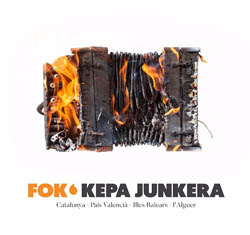
|
-
Kepa Junkera, the prolific Basque diatonic accordionist, has put together another work of great breadth, this time exploring the folk music of the Catalan-speaking lands of Western Mediterranean. Over the past 30 years, Junkera has released or been featured on about two dozen recordings, collaborations and special projects, not to mention his appearances with other musicians. Certainly his overall oeuvre is somewhat uneven, perhaps by design, however his most important and lasting works do constitute quite a legacy. Fok's 34 tracks explore a wealth of music across Catalonia itself, and also the Valencian Country, the Balearic Islands as well as Alguero (L'Alguer) a Catalan-speaking city on the island of Sardinia...
David Cox digs deep into this varied 2 CD exploration.
|
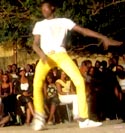
|
-
Balani Show Music in Mali
Malian music has a claim to be the best represented African tradition on the world music scene, with artists such as Salif Keita, Ali Farka Toure, Fatoumata Diawara and Oumou Sangare achieving international recognition. In fact, Malian artists often dominate the world music charts single-handedly. However, despite the widespread attention on Mali's musical landscape, the music known as balani show is almost entirely unknown outside the country. Making use of new technologies and mutating in interaction with global influences, the music has shifted from a rural tradition to an urban electronic dance music in recent decades.
Read an overview by Adam Rodgers Johns and listen to some of the music.
|

|
-
Dimma is a label that has been releasing a host of terrific Nordic folk recordings. This review covers three recent releases: all are very different duos that highlight diverse approaches to fiddle playing.
Ånon Egeland and Mikael Marin: Sorpesoll
Ulf Nilsson and Örjan Hans-Ers: Helsinge Storpolska
Storis Limpan Band: Patina
Lee Blackstone reviews the three duos and you can listen to a few songs.
|
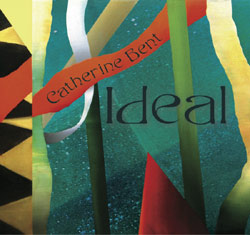
|
-
Sure, folks all over the planet know about widespread Brazilian music styles like samba and bossa nova. But choro, which apparently preceded those other two in popularity, is another matter. Having come about in the mid-to-late 19th century, choro was, like so much music of the Western Hemisphere, a combination of European and African influences. In the beginning, sprightly rhythms played on guitar and ukulele-like cavaquinho provided the fuel for melodic topping most often rendered on a flute... A recent resurgent interest in choro brought new possibilities, and American cellist Catherine Bent is intent on exploring them. Despite her chosen instrument being well outside the choro norm, Bent found favor among Rio de Janeiro's finest practitioners of it, who were quick to spot the commitment and skill of someone who, quite against the odds, spoke their musical language. Ideal is Bent's first choro release, and seldom has an album title been more appropriate as to how well a musical leap of faith pays off. All the tracks are Bent's own compositions, and all have an instantly classic sound that'll get you swinging and swaying
Read Tom Orr's full review and listen to the music online now.
|

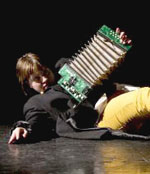
|
-
Two of the latest in our series In The Artist's Words
I asked Italian musician and band leader Massimo Donno to talk about some of the songs on his latest release, Viva Il Re! .
He wrote, "The album represents a journey to the South, from which we leave but must always return to. The concept of travel finds its centrality throughout the narration; this way the South itself stops being simply a well-defined physical and geographical place. It becomes a metaphor of landing and departure, which symbolically embraces Africa, Latin America and the East. Migration, in all its most minute details is the central theme of the album. " Read about the songs, and see and hear two short films.
The second comes from Finnish composer and accordionist Anne-Mari Kivimäki, who shares a song from the 5th and final recording in her Suistamo Suite: The Laboratory of Tradition. Read what she has to say about some of the latest songs in the series.
|
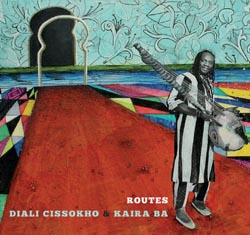
|
-
The kora, that 21-stringed harp wielded by West African griots, is expertly plucked by so many people surnamed Cissokho that it's impossible to keep track. But one thing's for sure: if you've got a Cissokho and a kora, you've got beautiful music. Diali Cissokho's lineage is traceable to 16th century Mali and he's a Senegal-born player who presently calls North Carolina home. His latest work is named Routes, even though "Roots" would have been just as suitable. Cissokho took Kaira Ba, his Tar Heel State band mates, to his Senegalese hometown of M'dour to lay tracks for this album, and then went back to North Carolina to finish things up. Esteemed players on both sides of the water had a hand in what results, and while this sort of hemisphere-crossing project is not new, the outcome is first rate.
Read Tom Orr's full review and listen to the music.
|
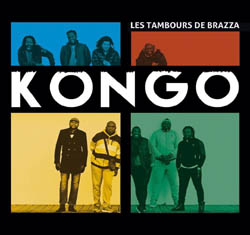
|
-
Les Tambours de Brazza have the complex job of representing a cross section of Congolese rhythms as well as figuring out ways to entertain increasingly global audiences as an ensemble with a focus on drums... They incorporate precision dance moves and deploy all manner of vocalists, bassists, guitarists, and trap kit players to offset what might get same-y for listeners who don't understand that every aspect of musical sound can exist in the hands of ensembles containing nothing more than a variety of expert, creative percussionists... They are a pop band, something made increasingly clear on Kongo. From growling vocals and repeated guitar figures to sinewy South African Zulu-influenced harmony vocals, or the almost Sanatana-esque six-string licks, this is a polished, produced ensemble with an army of Ngoma players underpinning whatever direction a particular track calls for.
Read Bruce Miller's review and listen to a few tracks
|

|
-
Sometimes one voice and one instrument are all that's needed. Such is the case with this unassuming work by singer Eva Salina and accordionist Peter Stan, who team up in tribute to Vida Pavlovic, a Roma singer from Serbia who died at the not-so-advanced age of 59 in 2005 without achieving the kind of international success that devotees of Balkan music believe she deserved... Salina, who is American, even though your ears might lead you to believe otherwise -sounds like she's pouring her heart out in a smoky Balkan bar as the hour grows late. And that's what's so charming about Sudbina: it's music that delivers emotion in abundance despite, or perhaps because of, the fact that only vocal and accordion power it.
Tom Orr shares this raw, emotional music
|
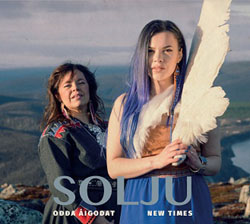

|
-
The Saami (Sámi) are an indigenous people of Northern Europe who pursue, at least in part, a traditional lifestyle still based on reindeer herding, and other resource-based lifestyles. With more than 130,000 people spread primarily across northern Norway, Sweden and Finland, as well as Russia (making up Saapmi or the Saami homeland), their music recalls, at least to this listener, elements of other nomadic cultures from Northern Canada to Mongolia.
On Odda Aigodat (New Times), Solju combine elements of Saami music (the yoik or acapella song-chant) with both modern synthesizer and rock guitar, as well as orchestral accompaniment, on 11 strong tracks. Vocalists Ulla Piirtjärvi and her daughter Hilda Lansman combine ancient, modern and even classical sounds on this new disc, accompanied by Samuli Laiho, (programming, synths, guitars, glockenspiel, piano) and Tejo Majamäki (percussion, vibes, hang).
Read David Cox' full review, listen to some music and find links to the ensembles web site and a live Finnish television performance.
Odda Aigodat (New Times) is our pick for Music of the Month for May
|
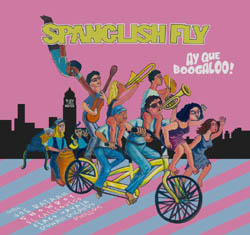
|
-
According to noted drummer and bandleader Bobby Sanabria, the boogaloo movement died fifty years ago. Ay Que Boogaloo! shows that music doesn't need to ride the coattails of a movement to stay alive. Boogaloo, the '60s-spawned combination of Latin styles with soul and rhythm and blues, was one way the mambo and cha-cha-cha found their way into the mainstream. It could be campy in its approach but was too good an idea to simply perish. The members of New York City's Spanglish Fly understand this, and while they can't be called the sole revivers of boogaloo, they're certainly among the hardest and best out there.
Read Tom Orr's review, listen to the music and watch a live performance video.
|

|
-
Readers probably know Moira Smiley from her work with Jayme Stone's Folklife. But there is much more to this artist. Having mastered traditional vocal techniques from locales as disparate as Appalachia, Ireland and Eastern Europe, the Vermont-born Smiley is a songstress seemingly without limits. She's been part of Celtic group Solas and the voice ensemble Kitka, helmed her own vocal group VOCO, performed with early music consorts in the UK, served as musical director for theatrical productions and somehow found time to become a multi-instrumentalist, composer and arranger who blends the folksy with the innovative. Unzip the Horizon is her latest, and as Tom Orr writes in his review, it's quite a reveal.
Listen to some songs, see a short film and read Tom's complete review online.
|
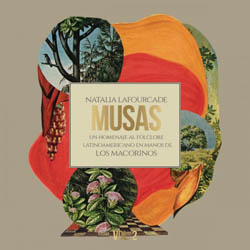
|
-
A chart-topping singer across Latin America, Natalia Lafourcade of Mexico took a step back and decided to follow a different musical path from the one that seemed to lie ahead of her. That path led her to a rustic house in the woods, where she began a partnership with an unlikely duo Los Macorinos, a silver-hair duo of acoustic guitarists who had played with the iconic ranchera singer Chavela Vargas.
The assembled musicians created a deftly made homage to classic Latin American songs, with the resulting album, Musas, surprising fans, but garnering a Latin Grammy for best folk album. Less than a year later, Lafourcade has released another set of vintage songs, adding in a few self-penned ones. Like the first, this is serene music that seems a world apart from the frenetic, high-volume landscape we find ourselves in. Still, Lafourcade crafts an album of varied textures and colors within her acoustic palette, featuring her lithe and versatile voice.
Read Marty Lipp's full review, and hear a few tracks from the album.
|
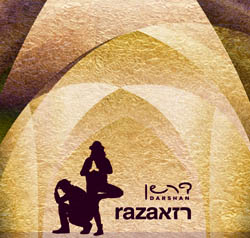
|
-
Darshan is a project whose intention is to bring Jewish mysticism to the people. At the core of the Darshan project is Basya Schechter, a terrific vocalist and oud player, who has been a part of the downtown New York City 'Jewish Radical Culture' musical scene. She is joined by MC ePRHYME (Eden Pearlstein), who has been invested in hip-hop for over a decade. In his rap lyrics, ePRHYME explores Jewish identity and mysticism.
For Raza ('secret' in Aramaic), Darshan is rounded out by several musical guests, such as Tamer Pinarbasi (kanun), Shanir Blumenkranz (bass, oud), and Aaron Johnston (from the Brazilian Girls, on drums and programming). There are other musical additions, such as cello, electric guitar, and human beatboxing and even the Fire Island Synagogue Choir, where Schechter serves as a cantor... Together, Schechter and ePRHYME revisited and reconceived the Kabbalistic lyrics that comprise the Kabbalat Shabbat: the opening portion of prayerful texts for the Friday night service, or "Welcoming the Sabbath." Read Lee Blackstone's full review and hear the music.
Raza is our April selection for Music of the Month. Learn more, and listen to some of the music, and subscribe today.
|
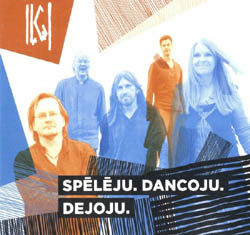
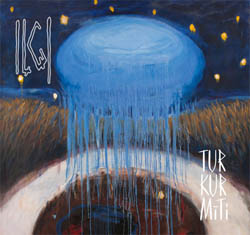
|
-
Formed in 1981, the Latvian band Iļģi have been busy for over thirty-five years, releasing consistently interesting and diverse albums. Ilga Reizniece, a classically trained violinist, initiated the collective; joined by Māris Muktupāvels, a bagpipe and kokle (a Baltic stringed instrument of the zither family) player, excursions began across Latvia to immerse themselves in folk songs and their traditions.
In 1993, the band wrote, "We do not know if what we play today can be classified as folklore, because we work with folk music much more freely than tradition allows. We tend to call it 'post-folklore.' When we play, the truthfulness and sensation of the moment is more important than the sound created and enjoyed long ago
We have always felt closely tied with the ancient stratas of folklore mythology, the rhythm and order of traditional life, and its coexistence with the rhythm and order of nature."
The band has been steadily producing recordings ever since then, and Lee Blackstone looks into their latest releases, that feature two very different approaches to the tradition, Tur Kur Mīti (Where Myths Dwell) and Spēlēju. Dancoju. Dejoju. (Played. Dance. Danced.).
Hear some songs from the albums, watch a 360 video of a concert and learn about the band's music and history in Lee Blackstone's review.
|
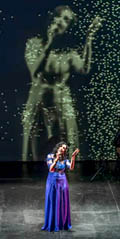
|
-
Tyran Grillo attended a recent concert of The Fourth Light Project at Schimmel Center in New York City and writes, "At the core of Niyaz are vocalist Azam Ali and multi-instrumentalist Loga Ramin Torkian on oud and kamaan (a custom viol-like instrument). They were joined by Sinan Cem Eroglu on kaval and komuz (Turkish flute and three-stringed lute), Gabriel Ethier on keyboards and programming, Ravi Naimpally on tabla, and whirling dervish Tanya Evanson, whom Ali credits as the genesis of this project. Live motion tracking was provided by Jérôme Delapierre, whose projections graced a series of vertical panels with ghostly echoes of the performers in real time.
To be sure, Ali was the focal point of the evening. Despite having heard her on record for nearly two decades since her days as one half of Vas, I became aware of terrains in her voice that only a live setting could map."
Read his full review, along with beautiful photos from that night, and a video of an earlier performance.
|
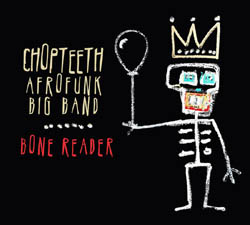
|
-
For listeners, unfortunately, music industry economics long ago curtailed the touring prospects of big bands like Chopteeth Afrofunk Big Band, the horn-heavy Washington, DC-based 12-piece Afrofunk orchestra founded in 2007. Yet live appearances by spirited transnational ensembles like this, singing in seven languages, are precisely the point of socially provocative music in these, our times. Hence, Chopteeth has won a fierce regional following from Baltimore to DC and suburban Virginia. Bone Reader testifies to what DC metro music aficionados have long known: from start to finish, Chopteeth holds its own with the best of Afrobeat groups inspired by James Brown disciples Fela Kuti, Tony Allen and their West and West Central African confreres. Channeling the classic vocal-guitar-brass-percussion sounds of Congolese, Ghanaian, Guinean, Nigerian, Senegalese and South African popular music, Chopteeth's sonic signature is a conscious, uninhibited, funkadelic dance mélange of crackling soul, R&B, jazz and hip-hop.
Read Michael Stone's full review, listen to a song and some excerpts, and see a live video by the band.
|
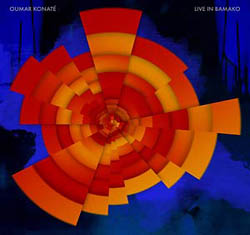
|
-
On his 4th international release, Live in Bamako, guitarist Oumar Konaté decided to capture a club performance in his home country of Mali. And among other things, this record is a reminder that this massive, land-locked nation is awash in hot guitarists. But while the occasional Takamba groove gives his origins away, Konaté can often come off as less allegiant to his roots than contemporaries such as Vieux Farka Toure or Sidi Toure. YouTube video clips show him, often as not, in power trio format, stomping on pedals and shredding in a way that's likely to be narcotic to heads out looking for a good groove to dance to. Moreover, two tracks here, "La Plus Belle" and "Ya Foutama," go straight for the reggae pulse, the stuttered rhythm, as well as some synth-concocted horn lines, held down by a keyboard player. Over such repetition, Konaté can crank out one flanged-out solo after another between verses, which he sings with an urgency that cuts through his playing.
Read Bruce Miller's review and hear some music from the CD and see the band in a live video.
|
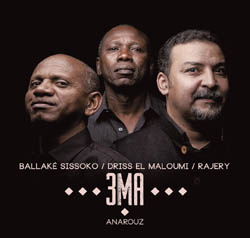
|
-
The mostly instrumental, acoustic Anarouz does much more than show off talent; it draws together musicians from Mali (kora master Ballake Sissoko), Morocco (oud specialist Driss El Maloumi) and Madagascar (valiha player Rajery) - known collectively as 3MA - to show how naturally music dispenses with boundaries when left to roam, as so many of these tracks seem to do. In fact, their instrumental voices blend effortlessly, and it often becomes difficult to discern who is playing what. Perhaps this is due, at least in part, to the fact that all three players wrote and arranged everything here. Perhaps it's the web-like patterns, unfurled like quilts that come from giving stringed instruments so much room to dance.
Read Bruce Miller's full review and listen to some of the music
|
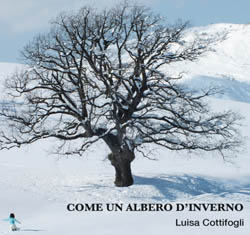
|
-
Italian singer Luisa Cottifogli came to my attention in 2000 with her remarkable first recording, Aiò Nenè. The recording was subtitled, "I come from the North, but I am from the South," and explored the dichotomy between Italy's colder, richer, more urban north and its warmer, poorer and more rural south. It bridged that divide, and then went on to incorporate music from Arabic and Indian traditions, as well as modern jazz and avant garde ideas. For all its worldliness, it was ultimately firmly rooted in the south that she proclaimed she was from. But she was born in the Alps and that is where she returns on Come Un Albero D'Inverno, as she and her ensemble proclaim in the opening track, "Yodel," where they take what in other parts of the world is considered a cliché of the past and place it in the bold, beautiful now.
Read Cliff Furnald's review and listen to some of the music.
|
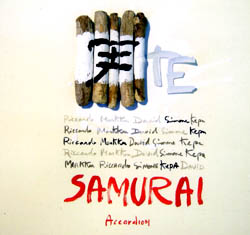

|
-
"It was as if his eye were an ear and a crackle went through it each time he shot a look at the accordion. ... The notes fell, biting and sharp; it seemed the tooth that bit was hollowed with pain." - Annie Proulx, Accordion Crimes
The accordion has a distinctive sound, dry but capable of beautiful melody, it is an instrument that a lot of European cultures share; its origin seems to be Lombardia, Italy. At one occasion I was very excited to open a book called "Accordion Crimes" but the accordion seemed to be just an excuse for endless mayhem against the characters. Not so this project called Accordion Samurai, by contrast a beautiful project, full of life, hope and even mystery. Masters such as Kepa Junkera and Riccardo Tesi have taught me to love the instrument, and so I was curious to hear this project with the involvement of both.
On Te, five of Europe's most creative veteran practitioners/composers, come together for a disc that features the diatonic accordion: Tesi (Tuscany/Italy), Markku Lepisto (Finland), David Munnelly (Ireland); Junkera (Basque Country/Spain) and Simone Bottasso. Full of variety, this disc gives a nice overview of how the instrument is used by its most successful exponents, across Europe.
Listen to some of the music and read David Cox review.
Te is RootsWorld's pick for Music of the Month
|
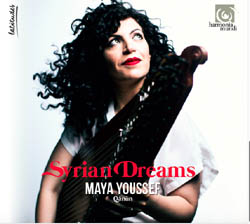
|
-
Syrian Dreams was inspired by Maya Youssef's reactions to seeing her homeland ravaged by war in 2011. Having never written music before yet unable to ignore the compositional impulses welling up inside her, she let her melodic reactions flow into the present album. Since growing up in Damascus, where she was told that the qanun was a "man's instrument," she has cultivated a masterful relationship with the plucked zither, and from it has unraveled this honest portrait of conflict: at once privileged to have life yet knowing that the very place which gave it to her has suffered unimaginable turmoil.
Hear some excerpts from the album, watch a full length video, and read Tyran Grillo's full review
|
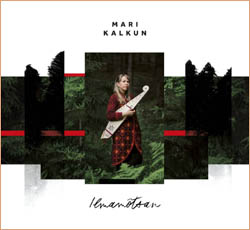
|
-
Rather than exploring the sounds of a full band this time around, most of Ilmamõtsan, the new recording by Estonian artist Mari Kalkun, is performed by just herself. The sonic exploration comes through the multiple instruments she uses to accompany her vocals: 12- and 36-string kanteles, accordion, harmonium, chimes and bells, and various percussive effects, often overdubbed but never overdone. There is wonderful musicality and beauty in each of these backdrops, but it is Kalkun's vocals that propel these songs. The singing is often soft yet always intense, emotive without lapsing into sappiness, somehow bridging a chasm between soothing touch and a visceral rawness. Even for those of us who speak nary a word of Estonian, these songs are compelling and engrossing.
Read Greg Harness' full review and listen to some of the music
|
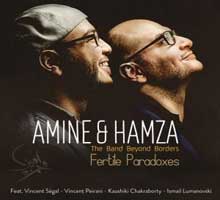
|
-
On Fertile Paradoxes, Tunisian brothers Amine M'raihi (oud) and Hamza M'raihi (kanun) combine their artistry with violinist Baiju Bhatt, saxophonist Valentin Conus, percussionists Prabhu Edouard and Fredrik Gille, and special guests besides. It's an aptly named album, as these musicians mix seemingly disparate genres, spirits, and geographic moods into an integrated whole. The commonality that binds them is an implicit understanding of not only where they've come from, but also where they're going.
The ability of this ensemble, known collectively as The Band Beyond Borders, to craft splendid sonic dishes from minimal ingredients finds synchronicity in Amine & Hamza's composing.
Read Tyran Grillo's review and hear some of the music.
|
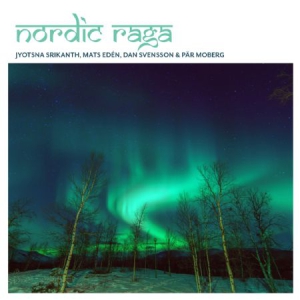

|
-
Nordic Raga is a cross-cultural project that joins together two musics from radically different climes: southern India, and the Nordic regions. This musical pollination is in accomplished hands. Jyotsna Srikanth, from Bangalore, is at the apex of southern Indian Carnatic violin players. Mats Edén has been a major figure in the Swedish folk revival ever since the 1970s, recognizable from his viola d'amore playing with such important groups like Groupa, Nordan, and on his own solo recordings. Via his musical studies, Dan Svensson (percussion and vocals) moved from pop and rock music, into folk and global music. Pär Moberg provides saxophone, flute, and didjeridoo playing; his work can also be heard with the enjoyable Eastern European-influenced group Tummel. The Nordic Raga project provides an opportunity for these musicians to explore some common ground the points of meeting become more apparent as the disc unfolds.
Lee Blackstone digs into the intricacies in his review.
Nordic Raga is our selection for February's Music of the Month.
|
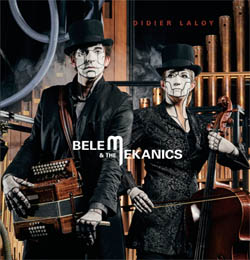
|
-
Diatonic accordionist Didier Laloy and cellist Kathy Adam, known together as Belem, combine forces with the machinery of Walter Hus for an experience like no other. Hus's creation is, at its core, an automated organ, but in the fullness of its expression a veritable orchestra, the sonic equivalent of a monochromatic film painstakingly hand-tinted. Film is indeed the metaphor du jour, as any of Belem & The Mekanics's 11 pieces could be the ideal soundtrack for, say, a Brothers Quay short (and by saying as much, I give it highest compliment). And while other albums have attempted similar experimentsnotably Pat Metheney's "Orchestration" projectthere's something organic about this one that sets it apart. Although I can only imagine how wondrous it must be to witness this music in a live setting, I enjoy letting its images project themselves onto the screen of my mind, to roam as they will.
Read Tyran Grillo's full review and listen to the music.
|
 |
-
Sometimes, music falls on my desk that I know will never be fully explainable as a review. Such is the strange world of Little Big Noz, the musical offspring of baritone saxophonist Ronan Le Gouriérec and his vocal antagonist Philippe Chasseloup. Together they have created a satirical show based on the traditional dance music of Brittany.
The CD version of these performances is just Gouriérec and Chasseloup, They play word games with the dances and their sometimes rigid interpretations by the participants, and Le Gouriérec turns the music on its head in a solo saxophone attack that respects the melodies, but more importantly, the freedom those melodies offer a creative musician. Because the chatter is all in local French, and is further complicated by the inside jokes and double entendres they insert, Gouriérec offered to help me interpret a few of them for you. Read more and enjoy some of the music.
|
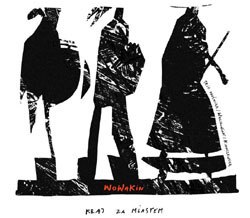
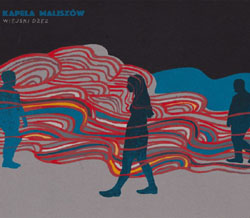

|
-
From Poland's burgeoning folk roots scene come two new and distinct bands. Both are trios, yet each group earmarks their locale.
WoWaKin are from the Mazovia region, an area that includes Warsaw, in the northeast of Poland. Each group creates thick clouds of trance-inducing sound built on traditional rhythms from the Polish countryside. The trio offers an array of foxtrots, tangos, polkas, oberkas, and more on their debut album. WoWaKin are comprised of Paula Kinaszewska (violin, vocals); Mateusz Wachowiak (accordion); and Bartlomiej Wozniak (drums and sound design). Their repertoire borrows from the Polish areas of Kielce, Radom, and Sanniki.
Kapela Maliszów is a family band from a small village in the Lower Beskids mountain range, located in southeast Poland, bearing towards Slovakia. The ensemble is comprised of Jan Malisz and his two children, Zuzanna (age 14) and Kacper (age 18). Jan Malisz anchors the group with his basolia, a Polish instrument reminiscent of the cello. Zuzanna sings and accompanies on percussion and Kacper plays both violin and nyckelharpa.
Read Lee Blackstone's reviews and listen to some tracks from each album.
Michal Shapiro was at WOMEX 2017, held in Katowice, Poland, and filmed each of these excellent ensembles.
|
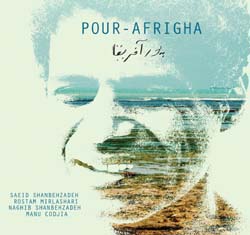 |
-
Politics and music are rarely far apart, as perhaps nowhere more evident than in the music of exiles wherever they find themselves. At a forcible remove from its cultural foundations, dislocated artistry resides as close as memory and sentiment can bring tradition bearers to a time, place and way of life that, if now denied to the artist, can be only more unfamiliar to the audience. Yet all that changes when the artist, in the company of fellow exiles and rootless cosmopolitans, finding themselves in a strange land, commune in song.
Born to a Baluchi father and Afro-Iranian mother descended from Zanzibar exiles enslaved in the Persian Gulf region of southern Iran, Saied Shanbehzadeh himself left for France when his experimental fusions of African-Iranian possession ritual music and other regional folk forms found disfavor with the cultural police (he was convicted in absentia for blasphemy and faces lashing and imprisonment if he were to return). Shanbehzadeh sings, composes, arranges and plays the neyanban (a double-reed bagpipe made of goatskin) and saxophone. On Pour-Afrigha he is joined by Iranian Baluchi singer Rostam Mirlashari, a former political prisoner, and accompanied by French guitarist Manu Codija, Shanbehzadeh's son Naghib on percussion (zarb-timpo, dammam, kesser, darbuka), and several other guests. Read Michael Stone's full review, hear some excerpts and see a video performance.
|
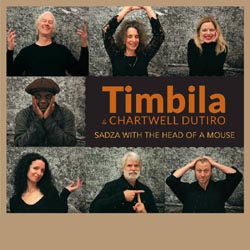
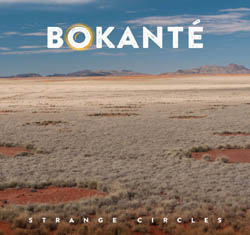
|
-
The sound and spirit of Zimbabwe and Mozambique runs through the heart of Timbila and Chartwell Dutiro's double album collection Sadza with the Head of a Mouse. Timbila is a New York-based band, led by Nora Balaban, that met in Zimbabwe in 1997. Since then they have delved into the rich heritage of southern Africa's songs and instruments, adding their own East Village multicultural explorations to the music. Here they are joined by vocalist and mbira master Chartwell Dutiro, a former member of Thomas Mapfumo and the Blacks Unlimited who now resides in the U.K.
Strange Circles is the debut offering from Bokanté, an ensemble put together by Snarky Puppy's Michael League. The group's name translates from Creole to "exchange" in English and the eight musicians from four continents have developed a cohesive, layered multicultural sound that serves as a foundation for Malika Tirolien's rich vocals sung in Creole and French. While in Canada, League heard the voice of Tirolien, who hails from Guadeloupe and now lives in Toronto. The meeting inspired the creation of Bokanté, with League and Tirolien collaborating on the music and Tirolien handling the lyrics. They are joined by fellow Snarky Puppy guitarists Chris McQueen and Bob Lanzetti, percussionists Jamey Haddad, André Ferrari, and Keita Ogawa, as well as Roosevelt Collier on pedal and lap steel guitars.
Both reviews include full tracks from the albums.
|
More reviews:
Newest
2016
2017
2018
,
This web site is optimized for any good browser.
Notscape and Internet Exploder will also work well here.
We won't make that choice for you.
The Hollow Ear: no roots, new routes
Featured CD link: Lodging... food... gas?: travel reviews
Hear.cc: Hearing Health Information
Please contribute to our survival.
About RootsWorld: RootsWorld is a world music magazine started in 1993, pretty much at the dawn of the term "world music" as well as the pre-dawn of internet publishing (I suspect this was the first music magazine of any sort published on the www). Our focus is the music of the world: Africa, Asia, Europe, Pacifica and The Americas, the roots of the global musical milieu that has come to be known as world music, be it traditional folk music, jazz, rock or some hybrid. How is that defined? I don't know and don't particularly care at this point: it's music from someplace you aren't, music with roots, music of the world and for the world. OK?
All pages at RootsWorld are © 1992-2015 Cliff Furnald / FNI Multimedia Publishing, New Haven CT
The RootsWorld name is protected by US trademark law.
All picture and sound images are the property of the artists and record labels, and are protected by copyright. No file or part of a file may be used for any purpose, commercial or non-commercial, without the express written consent of RootsWorld or the other copyright owners.
About the use of sound files and copyright protections at RootsWorld
|

